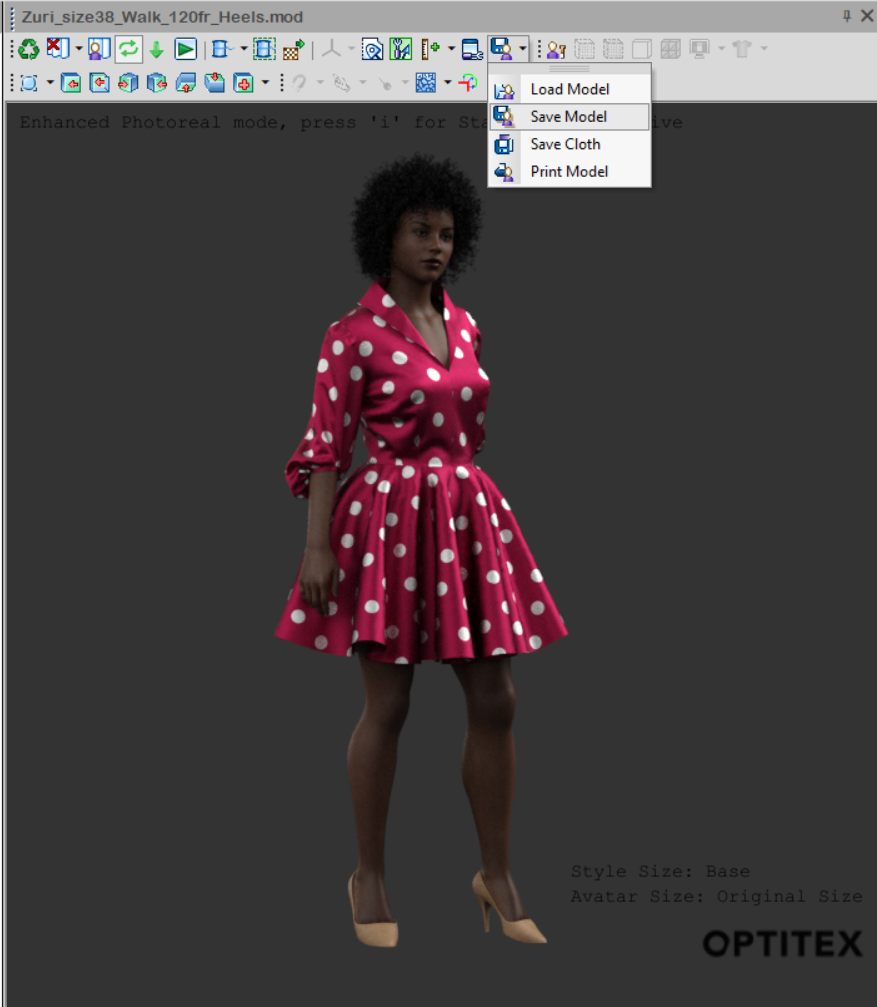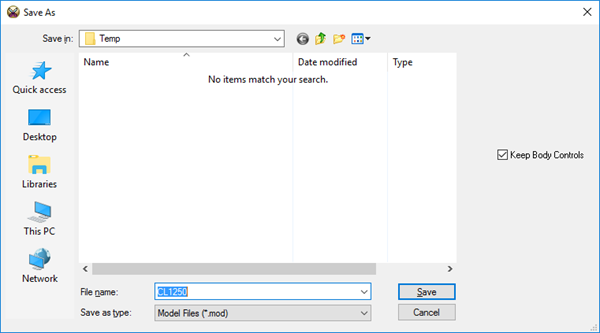Save Model
You can use Save Model when you want to save Optitex models, garments, textures and measurements. You can also export 3D models from Optitex into different formats to fit various 3D graphics applications.
You can save the model along with the simulated cloth on, allowing you to simulate multi-layered outfits and to drag and drop items of clothing onto semi-dressed models.
The Save As dialog is dynamic according to the type of file you are saving; therefore some of the fields only appear for specific file types.
 Note:
Note:
-
All models are saved with the simulated garment on. If you do not want to save with the garment, make sure you Clear Cloth before saving.
-
All models are saved with 3D text, tape measure and circumference measure. If you do not want save with these measures, make sure you Clear Lines before saving.
Icon & Location
-

-
Toolbar: 3D
To save your Model:
-
From the 3D toolbar, click Load Model and from the drop-down list, select Save Model:

The Save As dialog is displayed:
-
From the Save as Type field, select the type of file you want to save:

Optitex Modle Files (*.mod): Optitex model file format.
Rhino Files (*.3dm): The Rhino file format is useful for the exchange of NURBS geometry.
obj Files (*.obj): A standardized file format used to store 3D geometry data.
Autodesk
Files (*.fbx): File format owned and developed by Autodesk. It is
used to provide interoperability between digital content creation applications.
Optitex Cloth Files (*.clt): Optitex cloth file format.
AutoCAD Files (*.dxf): Standard 3D DXF files.
Measure Files (*.ord): If you manually enter this format, you get a list of OptiTex models measurement data.
GL Transmission Format Binary file (*.glb) A standardized file format used to share 3D data.
Graphics Library Transmission Format (*. gLTF) A standard file format for three-dimensional scenes and models.
 Note: Different saving options are available, depending on the file type selected.
Note: Different saving options are available, depending on the file type selected.
-
Enter a file name and then click Save.
Your file is saved.
 See also:
See also: